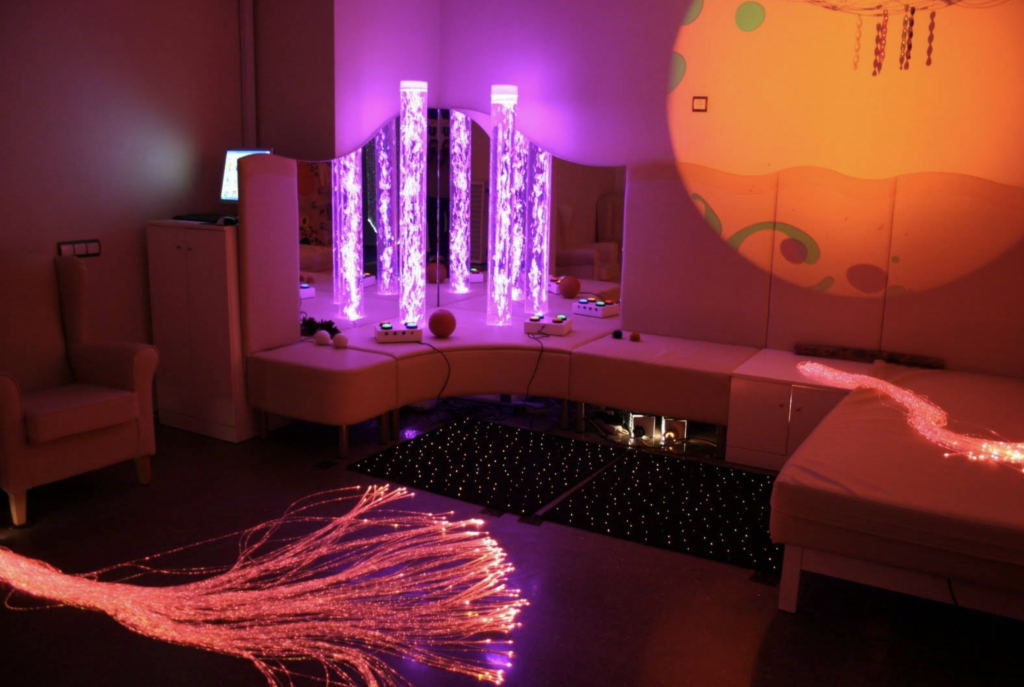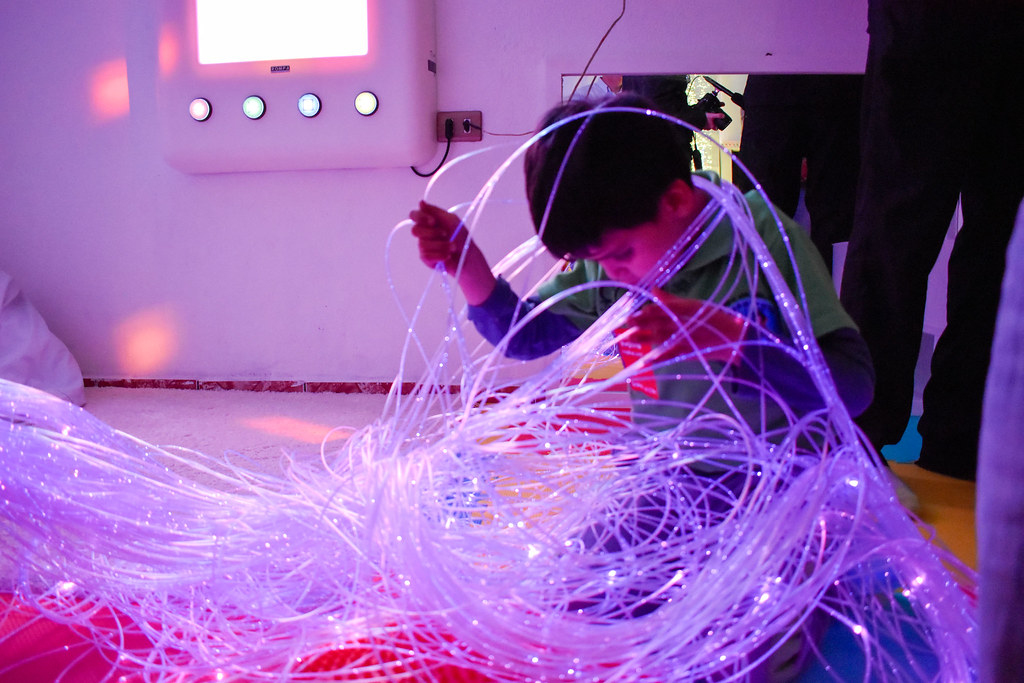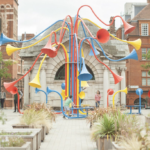Touch is as much an everyday instinctive practice as it is an emotional therapeutic sensation (Paterson, Dodge and MacKian, 2012). This blog will explore the relationship between touch and disability through the therapeutic landscape of a ‘sensory room’.
The immediate and obvious nature of touch has distracted researchers from noticing the subtle intricacies and embodied meanings it can evoke (Paterson, 2007). Our sense of touch is integral in understanding our sense of ‘self’ and our ability to interact and relate to others (Mintz, 2016; Price and Shildrick, 2002). For disabled people touch offers a way to understand how bodies interact, and experience place and the social and material worlds they inhabit (Walters, 2014). Research has shifted from viewing touch as a superficial cutaneous sense, and is instead exploring its delicacies, the intimate nature of touching and being touched, and its ability to produce “elemental moods and emotions” (Tuan, 2005, p.78).
Touch attempts to disrupt the sensory hierarchy by crossing the boundaries between the senses, it a multi-sensory experience as well as an isolated sense in itself (Price and Shildrick, 2002). Understanding the somatic and emotional responses touch elicits is slowly being recognised as essential to stimulate mental nourishment, improve wellbeing and pleasure, and helping children with disabilities navigate their social worlds (Paterson, Dodge and MacKian, 2012; Walters, 2014).
This was brought into focus on my recent visit to The Yard, an adventure play centre for disabled children, in Edinburgh. On entering the centre children were everywhere, noisily racing bikes, swinging in chairs, climbing walls, making mud pies, running or wheelchairing themselves frenetically with uninhibited enjoyment. I was ushered to a door in a hidden corner. I stepped into the centre’s sensory room, a tranquil haven of quiet and calmness, a complete contrast to the spaces outside. Sensory rooms are environments designed for those with learning and physical disabilities to engage with their senses and interact with a range of sensory stimuli in a calm, controlled and safe space (Fowler, 2008).

The Head of Wellbeing explained how the sensory room encouraged children to move freely through different tactile worlds, using touch together with other senses to explore. I saw bubble machines, weighted anxiety bears, fibre optic waterfalls, and different materials, textures and surfaces. I witnessed the room’s therapeutic benefits of reducing fear and anxiety, evoking pleasure and awe, and stimulating mental nourishment. It offers a unique retreat where children could self-stimulate, at their own pace, without the distraction and pressures of the outside world. During the pandemic, which created tension around touch and deprived children of many tactile interactions, this room offered a space for tactile pleasure and helped the children learn how to self-regulate touch and understand who can and cannot be touched.
For disabled people, particularly with sensory impairments, touch is detected at least to some degree (Walters, 2014). It is our most trusted sense as we are least likely to be deceived by it (Tuan, 2005). It can therefore be used in diverse ways to help people better navigate their real and imaginary worlds (Walters, 2014).
Word Count: 497
References:
Paterson, M., 2007. The senses of touch: Haptics, affects and technologies. Berg.
Paterson, M. and Dodge, M. eds., 2012. Touching space, placing touch. Routledge.
Tuan, Y.F., 2005. The pleasures of touch. In The book of touch(pp. 74-81). Routledge.







